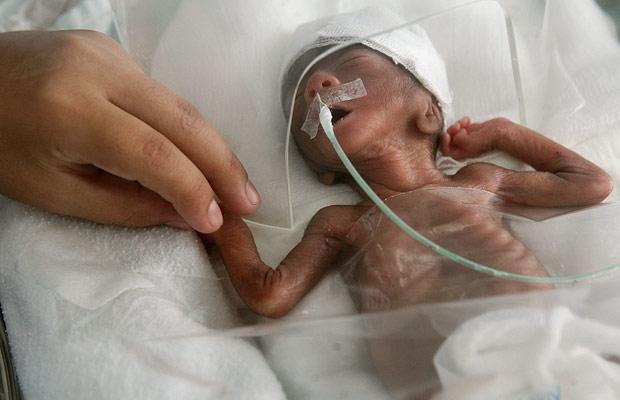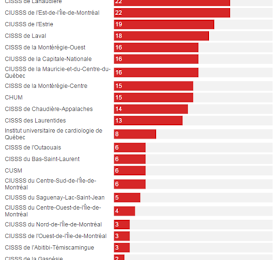Research based on an 11-year study of 4,500 babies indicates very premature babies are surviving at a greater rate than ever before.
The researchers found a “small but significant drop in fatalities for babies born between 23 and 37 weeks gestation,” as well as a decrease in premature babies manifesting with neurophysiological problems, the Daily Mail reported.
Dr. Noelle Younge, Neonatologist and Assistant Professor of Pediatrics at Duke University, led a team of scientists in the investigation at 11 hospitals throughout the United States, the report continued. There was little statistical significance to be found in babies born prematurely at 22 weeks, but the numbers were noteworthy at 23 weeks.
“At 23 weeks we did see an improvement over time,” Dr. Younge stated.
The findings are significant because 24 weeks generally is considered the point of viability. However, more research is indicating that the point should be pushed back to 23 or 22 weeks. It also has implications for the abortion debate, given that the U.S. Supreme Court ruled that states should be able to prohibit abortions when babies are viable outside the womb.
“Younge’s team found that among all children born at 22 to 24 weeks, rates of survival without neurodevelopmental impairment – which was assessed at age 18 to 22 months of corrected age – increased by 4 percentage points from the earliest study period to the most recent,” the Daily Mail reported, elaborating that survival without neurological impairment improved from 16 percent to 20 percent, and the death rate of premature babies decreased from 70 percent to 64 percent.
SUPPORT LIFENEWS! If you like this pro-life article, please help LifeNews.com with a donation!
More dramatic results were seen in premature babies born at 23-24 weeks. Babies born without neurological impairment improved from 7 percent to 13 percent for those born at 23 weeks, and 28 percent to 32 percent for babies born at 24 weeks gestation, the researchers found.
“That seems to be the key demarcation point because between 22 and 23 weeks, the lungs are really maturing. The brain is maturing. So in this 22-week window certain infants have met maturation milestones and can survive,” Dr. Younge’s research team told the news outlet.
Some scientists credit the trend with mothers having fewer infections and taking corticosteroid injections, usually in their arms or legs two to four times a day over a two-day period during pregnancy, thus promoting the baby’s growth more rapidly, the report continues. Betamethasone (Celestone) is the most common steroid used and differs from the anabolic steroids used by athletes and extreme bodybuilders.
The World Health Organization estimates 15 million babies are born prematurely worldwide each year, defined as prior to 37 weeks of gestation. Furthermore, premature births and subsequent complications remain a leading cause of death for children under age 5, with upwards of 1 million premature babies perishing each year, according to WHO. However, upwards of 75 percent of these deaths could be prevented with modern medical intervention.
Antenatal steroid injections, kangaroo mother care, antibiotics for infections when a mother’s water breaks, breastfeeding, magnesium treatment for potential neurological impairments, and midwifery care are among the interventions correlated with improved outcomes for these premature babies.
World Health Organization data from 184 countries worldwide estimates premature births range anywhere from 5 percent to 18 percent of live births. Countries with the highest mortality rates include India, China, Nigeria, Pakistan, Indonesia and the United States. Countries with the lowest mortality rates include Malawi and Zimbabwe.
“Every year, about 15 million babies are born prematurely — more than one in 10 of all babies born around the world. All newborns are vulnerable, but preterm babies are acutely so. Many require special care simply to remain alive,” Ban Ki-Moon, United Nations Secretary General, wrote in the forward section of the Born Too Soon: The Global Action Report on Preterm Birth.
“Newborn deaths — those in the first month of life — account for 40 per cent of all deaths among children under five years of age. Prematurity is the world’s single biggest cause of newborn death, and the second leading cause of all child deaths, after pneumonia. Many of the preterm babies who survive face a lifetime of disability,” Ki-Moon continued.
However, researchers caution the public against putting too much faith in the recent studies, and acknowledge that results vary widely.
“Although early neurodevelopmental assessment is important for the timely identification of children at risk for long-term neurologic impairment or developmental delay, its capacity to predict later functioning is limited,” Dr. Younge’s research team wrote.
The research team continued: “Many children will catch up to their peers by school age, whereas other children will have persistent impairment. Conversely, some children without signs of neurodevelopmental impairment in early childhood will have impairments that manifest at school age.”






